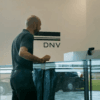Richard Gladman, head of driving and riding standards at IAM RoadSmart, gives his recommendations for items to keep in your car:
Phone and charger
Turn your phone to silent and place it in the glove box to avoid temptation to use it whilst driving. Ensure you remember a charger for any emergencies when you do need to use it.
First aid kit
You never know when you might need a first aid kit. You may need it yourself or you may be able to help another road user if you’re the first on scene at an incident. So, keep one in the boot of your car just in case.
Empty fuel can
Carry an empty fuel can with you in case you’re stranded and need to go and pick up some fuel.
Do not carry a fuel can which contains or has recently contained fuel, as these can be a fire hazard.
Warm clothes/blanket/high vis
We recommend keeping a blanket and some warm clothes in your car. The last thing you want is to be cold whilst broken down on the side of the road. Ensure you wear a high visibility jacket whilst moving outside of your vehicle so other road users can see you.
Food and drink
Don’t forget to bring some snacks and water to keep your energy levels up – always carry a bottle of water when driving.
Jump leads
Your car battery can go flat at any time and can be a worry when your car won’t start. Make sure you keep a set of jump leads in your car so you can start your engine with help from another vehicle.
Shoes
Keep a pair of comfortable/sensible shoes in your car. You never know when you’re going to break down, and where for that matter. You may need to assess your car in the typical English weather.
Warning triangle
An item that is regularly overlooked is the reflective warning triangle. In accordance with the Highway Code rule 274 you should “put a warning triangle on the road at least 45 metres (147 feet) behind your broken-down vehicle on the same side of the road, or use other permitted warning devices if you have them. Always take great care when placing or retrieving them, but never use them on motorways.”
Richard says: “A journey can be a pleasant experience with the right planning. But it can turn into a nightmare if circumstances change and you do not have the right tools for the job with you. Getting stranded either in suddenly changing weather conditions, break downs or road closures will be made more bearable if you can let people know where you are, and survive in relative comfort and safety until you can get safely where you’re going.”
A properly trained and equipped fleet is safer, healthier, saves money on repairs and penalties, and ensures companies are within compliance with Health and Safety legislation.
CHIOCES is IAM RoadSmart’s online learning and risk management platform – a perfect solution to the challenge of keeping large numbers of drivers informed, trained and assessed. CHOICES is extremely cost effective and easily implemented – contact us to find out more.


